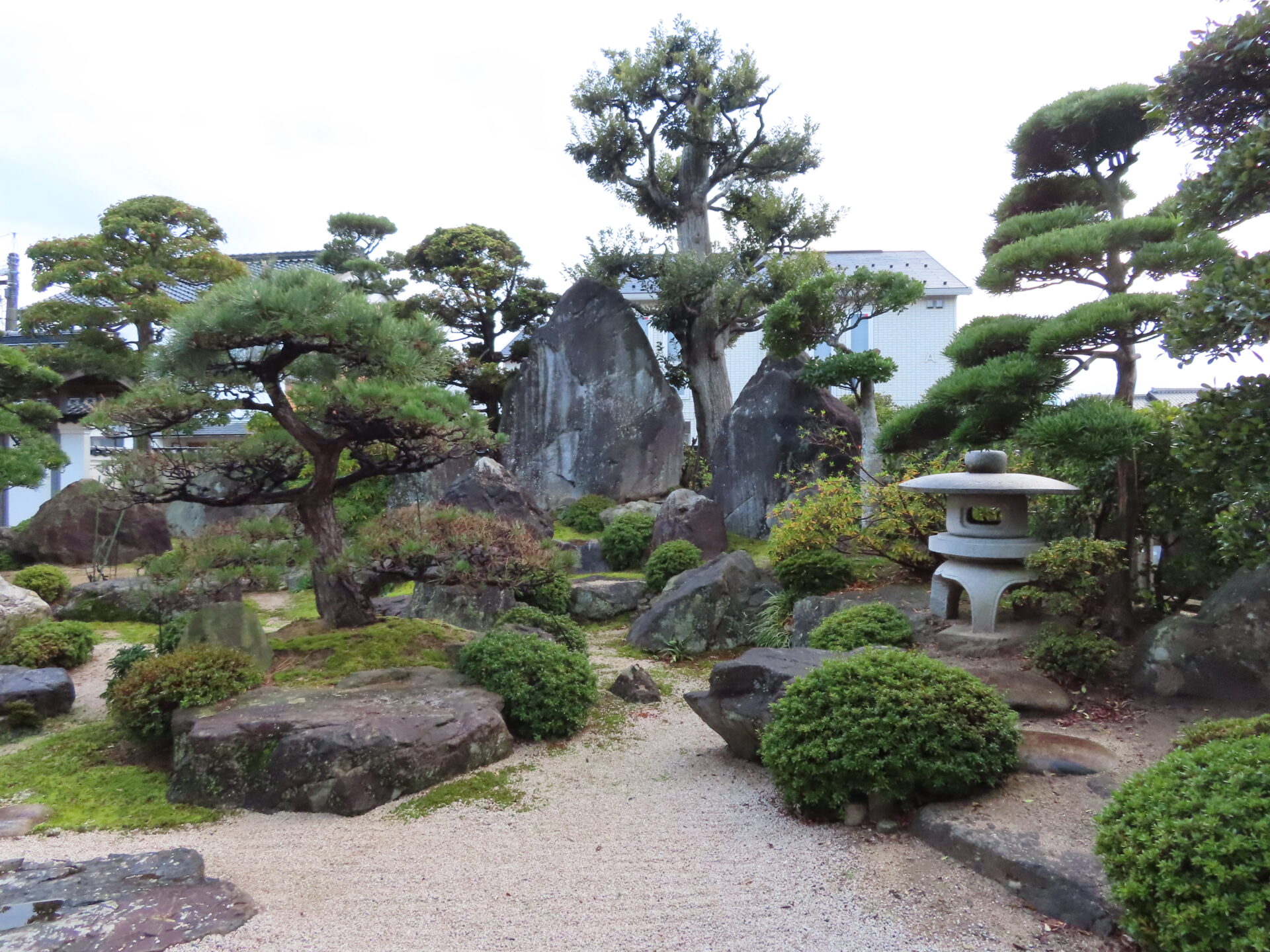Yukimi Toro (snow lantern) is a popular lantern with a cute and attractive appearance with a large umbrella, and is used in Japanese gardens all over Japan. They can be seen in many Japanese gardens, which are called “famous gardens,” but they are also used in private gardens without fail. In Matsue City, Shimane Prefecture, lanterns made of raitai stones are famous throughout Japan. They are called Izumo lanterns as they are unique to the Izumo region.
If you look closely, you will see that they vary in shape, but they all have the same large bulky feature. However, they may have four legs, three legs, or other legs.
What is the correct orientation for the three legs among them? The late Mr. Keiji Uehara, the founder of landscape gardening education in Japan, explained this, so let’s take a look at the contents.
Reference: Keiji Uehara, How to Create a Stone Garden, Kajima Shoten, 1996
custom from the Shangtai
When setting up a tripod lantern such as the Yukimi-type, either one or two legs should be facing the front, or the upper seat. In principle, the two legs should be facing each other.
This can be seen in the way the incense stand in the alcove is placed.
If the scroll depicts the Buddha, the incense stand is placed in front of the scroll, but since the incense stand is to be offered to the Buddha, the Buddha is the front. Therefore, it is placed facing the Buddha with the two feet facing each other. Conversely, when viewed from the human side, one leg is facing the person.
On the other hand, when there is no Buddhist image on the altar and a guest is admiring the altar, the guest is the principal object of worship, so the two feet should be facing the guest.
In the case of a garden, if there is a sanson-ishi (a set of stones resembling the three images of Buddha) or similar stone set behind the incense burner, the two feet should be facing that stone, so the first foot should be in front of the person facing the burner.
This is in accordance with the placement of the feet on the incense stand.

combined with the waterfront
Snow lantern are generally viewed by floating them on the water’s edge, just as the name “Yukimi” is derived from “Ukimi-toro” (floating lantern). In this case, considering the way the lanterns are projected on the water, it is better to place them as close to the water’s edge as possible to make it easier to project them on the surface of the water.
When the lantern is placed with one foot in front of the other, the apex of the triangle is in front of the lantern as seen from above, which is the distance from the center of the lantern to the apex of the triangle. However, when the second foot is in front, the distance between the center of the firebox and the point where one side of the triangle is divided in half, as seen from above, is the shortest distance.
Therefore, from the perspective of viewing the yukimi lantern floating on the water’s edge, it makes more sense to have the two legs in front of the lantern.
In reality, however, aligning the two legs along the shoreline of the waterfront is deliberate and lacks charm. Therefore, it is often placed with the legs slightly offset from each other.

Yukimi lanterns are popular lanterns that can be seen everywhere. However, the direction of these lanterns is surprisingly unknown. If you understand the meaning of the direction of the lanterns, you can appreciate Japanese gardens more profoundly. One can appreciate Japanese gardens more profoundly if one understands the meaning of the direction of the lanterns. By exploring the meaning of the lanterns, you will be able to understand the wishes and spirit of the garden.


